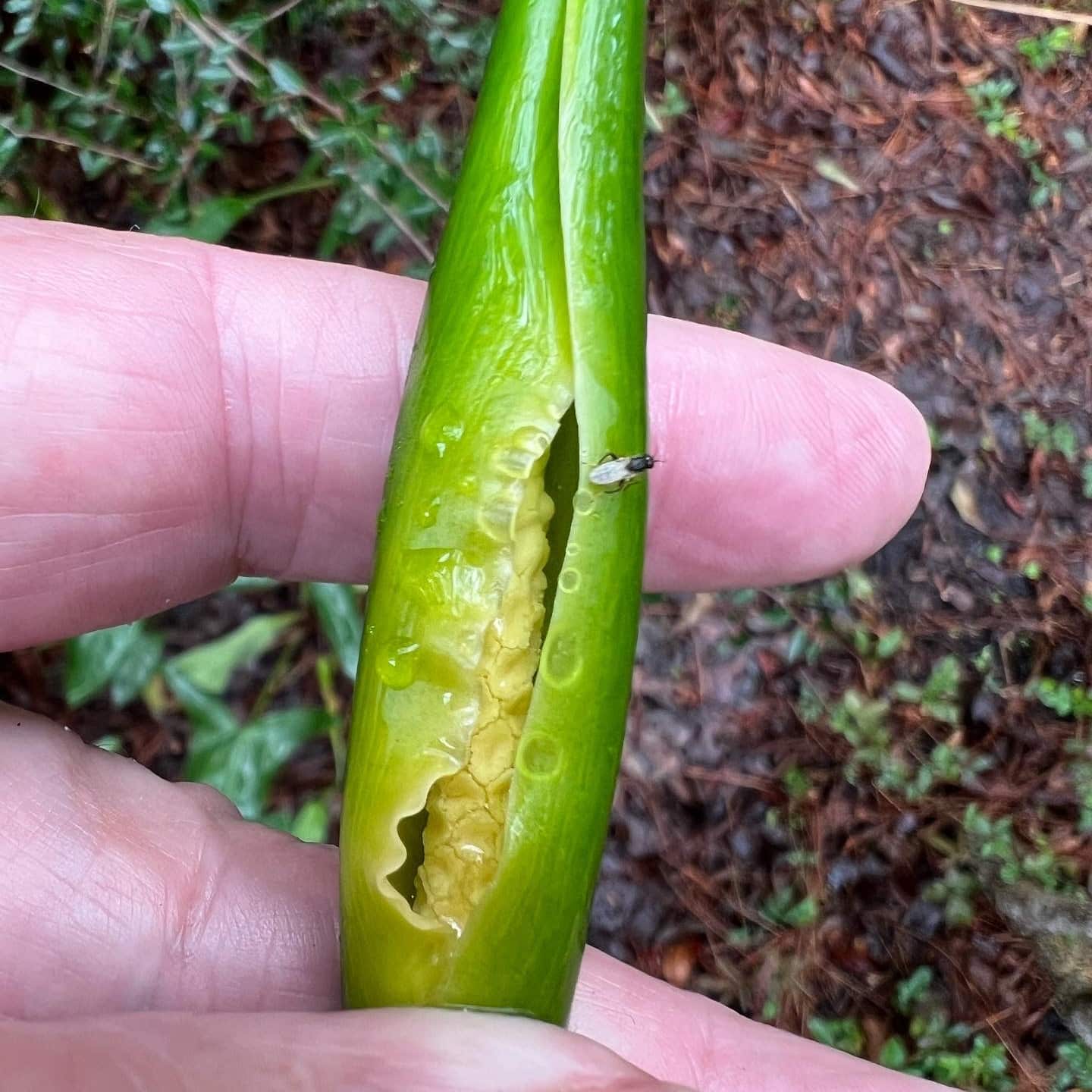So many native plants in our world have uses to humans besides their appearance. In our modern world we are largely focused on how they look in the landscape. But this was not the case for prior generations of people across the globe. In many cases, a single plant could be used as food and medicine, making it a staple in their lives. Such is the case for Green Arrow Arum, also known by Native Americans as Tuckahoe.
If Tuckahoe sounds familiar, you would be correct. Tuckahoe is a village of about 6,500 people, located just north of New York City – named for the term used by Native Americans of the region to refer to the globular, bulbous roots of Green Arrow Arum. This plant was a staple in their diet and used for medicine. This species grows throughout the eastern U.S. and Canada.
How it was used as food is a tale of preparation, because as a group, arums can be quite toxic. The starchy roots are filled with oxalic acid crystals that, if eaten raw, will give you a strong tingling on your tongue and cause heart palpitations. Drying or cooking serves to degrade the crystals, leaving a rich source of starch available for consumption. Yes, I have tried eating Green Arrow Arum roots both ways. I can collaborate the sensation (from a tiny bite) when eaten raw, and from dried tissue – with texture and taste like potato.
In our part of its range, Green Arrow Arum is scattered across freshwater wetlands, but along the east coast, large, multi-acre beds occur in shallow water portions of rivers. In those cases, the bulbous roots are reported to be the size of basket balls, buried deep in the mud. Digging up large tubers like that is worth the effort and drying them would be a great way to preserve them for later use.
But who, besides a curious Cajun, even knows how tasty their roots can be? Not many, sadly, but the above ground leaves and even the shy, hidden flowers are attractive. This plant would be right at home in any shallow pond or pool in anyone’s landscape. Their arrowhead-shaped leaves spread out from the base of each plant.
In spring, their flowers are tucked beneath the leaves, in a long, vertical, partly opened structure called a spadix (the flower form of the more recognized Peace Plant). Flowers emit a slightly pungent odor that attracts mostly fly pollinators. The spadix transforms into a bulbous seed pod that holds numerous large, green, gelatinous seeds that float away to start new plants.

For those that want an arum with a showy flower, the closely related White Arrow Arum has a more open, bright white spadix that rises above the smaller, arrowhead leaves. Also known as Spoonflower, this species produces bright red seeds that also add to its attractiveness.
Both species are examples of attractive vegetation, but with a more useful, yet forgotten use as food. Given the care in preparing either for consumption, you would have to wonder how those first Native Americans came to figure out how to make them safe to eat. Same would be true for mushrooms. Now, those would be great stories.
Hope to see you in our great outdoors!
Photos by Mark W. LaSalle